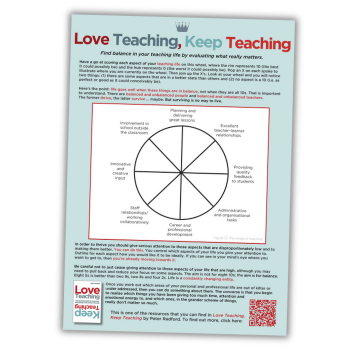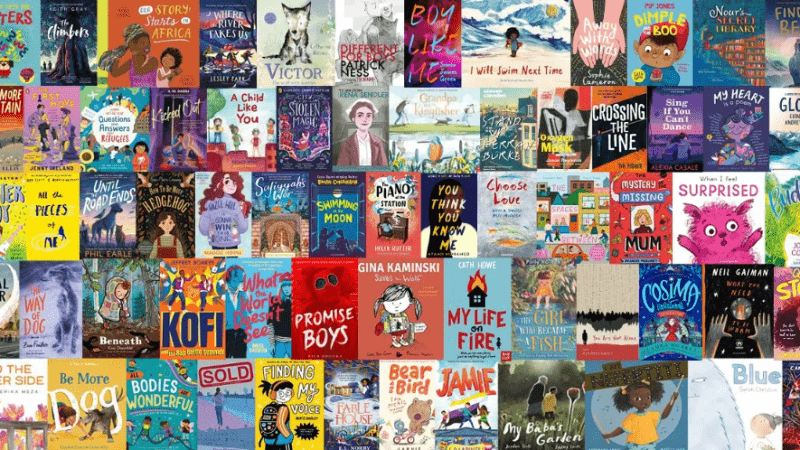Why the Humble Whiteboard is the Most Important Tool in my Classroom

We should all salute this familiar old friend, says Tom Starkey – even if some of us struggle to use it without getting marker pen on our sleeves…

- by Tom Starkey
- Assistive technology adviser in HE Visit website

What’s the most ubiquitous bit of kit in a classroom? What, without any other hint or clue, would act as an identifier saying this is a place of learning or, more realistically in my case, this is the place where attempts are made at learning?
Would it be the moulded plastic chairs that the Spanish Inquisition would have thought a tad extreme?
The polystyrene roof tiles with a slightly browning watermark that looks eerily like the face of the PE teacher?
The grey, monolithic filing cabinets that tower above all and are opened by none?
No. For me, it’s the ever-present-but-not-often-thought-about whiteboard. And whiteboard pens. And the sleeve of your shirt that you use to wipe it after the sod who’s in the room before you has nicked the eraser for the fourth time this term.
(TEACHER TIP! – that’s the primary reason why I wear black shirts to work; marker doesn’t show up.)
The humble workhorse of the classroom, the whiteboard isn’t flashy (unless it’s a smart board – the strobing off those things is enough to bring on a seizure); but it’s dependable, reusable and solid.
Equipment fads come and go, technology is introduced, used once and then banished to an old file box somewhere out of the way, but through it all there’s the whiteboard – never running out of batteries, never inexplicably locking you out after you blatantly put the right password in three times no matter what that lad in IT says, never freezing without warning just before you get to the scene you actually want them to study.
When the most serious issue is if some fool uses a permanent marker (ANOTHER TEACHER TIP! – go over the permanent scribbling with a dry-wipe pen and it if you’re lucky it should come right off. Thank me later NQTs.) you know you’ve found something worth treasuring, as the only real limit to its use is the skill, knowledge and imagination of the teacher who is using it.
Which is where my problem comes in.
Although I have the utmost respect for the whiteboard and its rightful place as king of classroom-based kit, there has never been a tool at work that has caused me so much grief.
There are a couple of issues.
First, my board writing is a horrendously frightening, spider-like scrawl that would not look out of place daubed on the caves of some ageless and malicious creature as a warning not to enter.
The state of it has been a point of shame and embarrassment ever since my training days when my PGCE tutor took one look at my lesson objectives, recoiled in horror and gave up his teacher training post to join a monastery. The kids also see it as a source of exasperation and/or hilarity given their mood.
“Sir! What’s that picture there?”
Trending
“What picture?”
“That bit. ‘The writer uses a series of…’ then there’s a picture of a dragon or something ‘…to illustrate how…’
“That’s the word ‘metaphors’.”
“No, sir. That is a dragon. There’s its horns and wings and everything. Serious. If that ain’t a dragon then I’m a bit worried.”
Then there’s the fact that I’m left handed. It’s a wonderful thing to be able to both write and erase simultaneously on a whiteboard (LEFT-HANDED TEACHER TIP! – use a chisel tip marker rather than bullet because it forces you to position your arm into a position that minimises accidental rubbings).
With the whiteboard being such an important tool in a teacher’s kit, my lack of skill in using one has actually been something that has caused me a fair amount of angst.
To combat this I do what I usually do when faced with a task that I’m subpar in: I massively over-compensate.
I have road-tested countless markers analysing drying time, ink-flow, and weight if gotten hold of by a student and used as a projectile. I even bought a mini whiteboard so I could practise at home.
The first thing I did was write out the line ‘I am not a massive nerd’ 50 times, just to make myself feel better about the purchase.
The thing is, much as I may struggle with using one, the whiteboard represents everything a good teacher tool should be.
Reliable, easy-to-use and massively adaptable given what you may want to achieve in your classroom.
So please, raise your chisel tips in salute to the hardest working bit of kit in the classroom (just make sure the markers aren’t permanent…).










